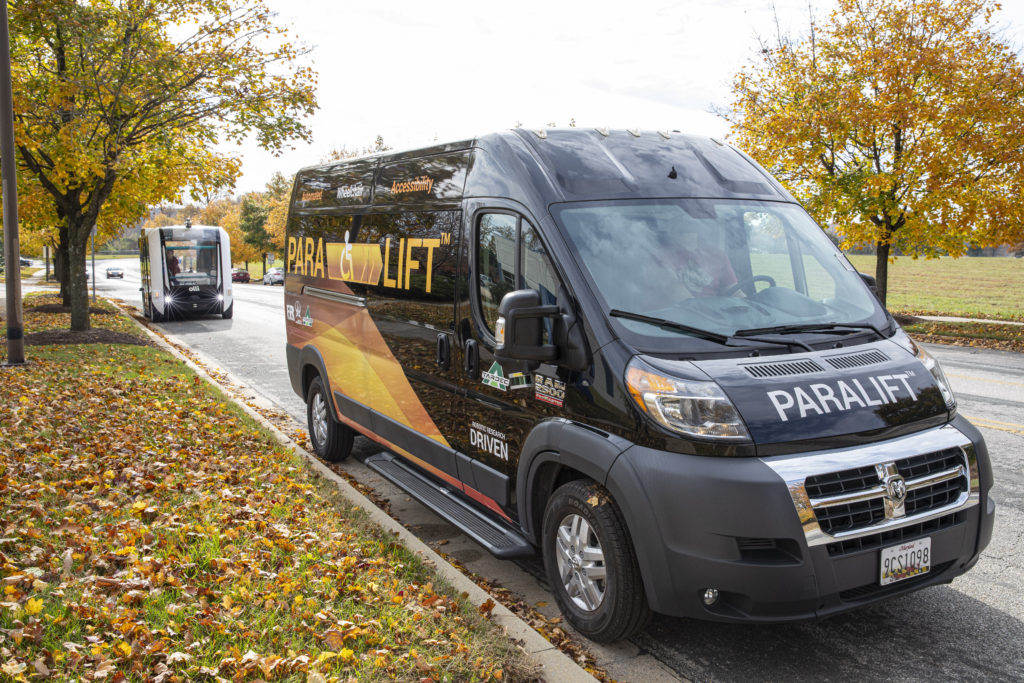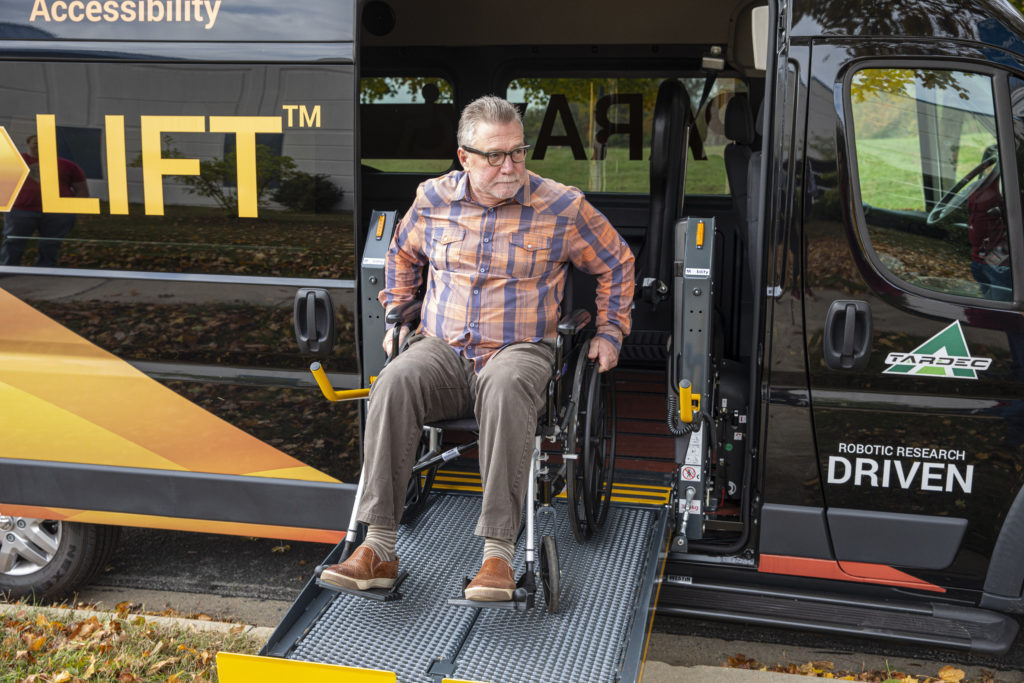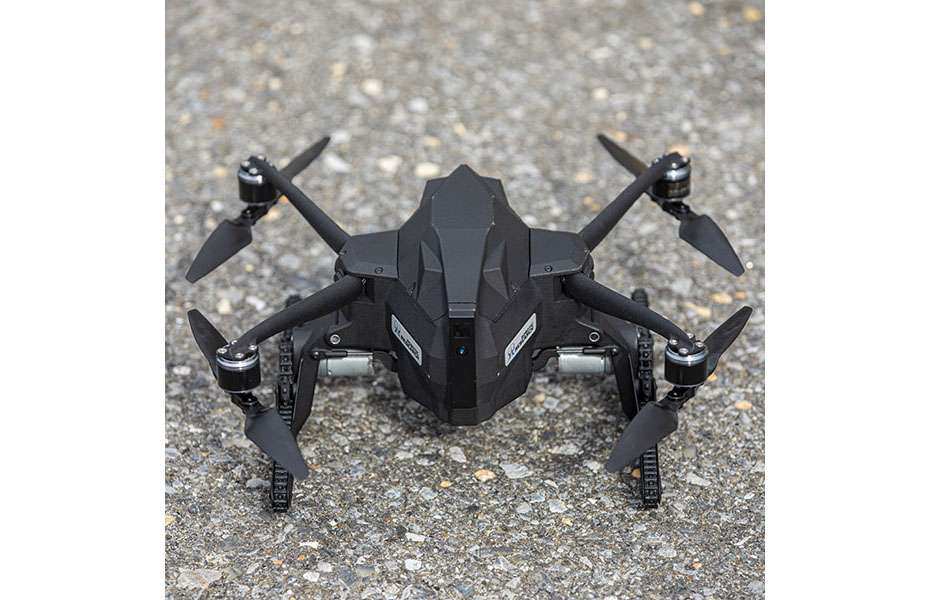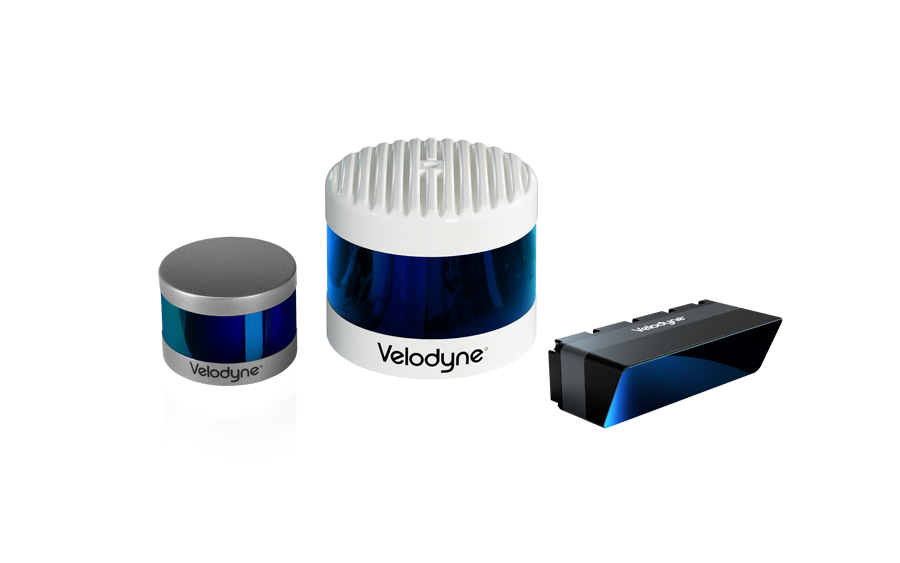
For nearly 20 years, Robotic Research has been a leading provider of autonomy software and robotic technology to advance safety, security and effectiveness of transportation and mission critical operations. What began as a small team of former NIST scientists specializing in the development of solutions to meet the unique needs of the U.S. Armed Forces, Robotic Research is now a driving force in the transformation of commercial and defense autonomous operations.
With autonomous and semi-autonomous vehicles evolving into the transportation infrastructure, Robotic Research is a leader in the development of autonomy kits, safety and localization devices that improve the quality, efficiency, and accessibility of autonomous transportation.
Robotic Research and Velodyne share a strong commitment to advancing transportation safety. A good example of this is how Robotic Research uses Velodyne’s Puck™ sensor in its ParaLift™ system, which autonomously loads, secures and unloads wheelchair passengers in shuttle vehicles. Paralift provides users independence in their loading and securement process.
To learn more about Robotic Research and how it is contributing to making mobility safer and more efficient for society, we connected with Alberto Lacaze, president of Robotic Research.
Alberto: Robotic Research is a leading provider of autonomy software and robotic technology solutions for commercial and government autonomous operations. Through our new innovative technologies, we are striving to revolutionize autonomous systems for the military, delivering unmanned transformable robots to extend the reach of Special Forces units, enhancing driver capabilities, making public transportation more accessible for all and more.
Our autonomy kit is AutoDrive, which is platform agnostic and can be retrofitted to vehicles of all sizes — from small, portable robots to large trucks and buses. AutoDrive supports various autonomy programs in commercial and government sectors and is currently operating in communities and cities around the globe. The kit enables driver-enhanced as well as fully autonomous functionalities. It also allows the vehicle to collect and analyze data to continually monitor and provide ongoing systems improvements. Our team is excited and inspired by the fact our autonomy technology is making the future of transportation and autonomous technology better and safer.

Alberto: ParaLift™ is an accessible transportation vehicle that features automated boarding and securement for wheelchair passengers, giving them more independence and autonomy in their daily lives. To use the ramp, there is no driver aid required. Working together, the automatic door opener and powered wheelchair lift, along with the wheelchair securement, safety and announcement systems, provide the user with increased independence. ParaLift allows users to load and unload all by themselves. The securement system is also compatible with various sizes and types of wheelchairs, allowing for a wide range of wheelchair users to access ParaLift safely, securely and independently.

Alberto: Pegasus Mini is the backpackable member of the Pegasus family, a group of tactically deployable, transformable, autonomous robotic systems. Weighing around 4 lbs. and folding up to the size of a football, it fits into a rucksack or backpack. Similar to its Pegasus product family members, the Mini can be equipped with mapping sensors and operate in GPS-denied environments. It can deploy in confined spaces, traversing areas generally unreachable for other UAVs and UGVs. Pegasus Mini was developed as a situational awareness tool, but it can also carry small payloads. The Velabit sensor plays a huge role in the Pegasus Mini, because the Velabit is small and lightweight, and offers some of the most advanced GPS-denied HD mapping in the industry. Velabit can be added to the Mini to empower it with great data acquisition capabilities, which become especially meaningful due to the Mini’s size and versatility.
Alberto: Our market leading autonomous technologies are used across the world, as well as in some of the most critical situations for law enforcement, first responders, search and rescue teams, military and public transportation. We want to be partnered with what we believe is the best so that we can work to ensure the best possible results through our technologies every time. We use Velodyne’s top-of-the-line sensors to assure mission success for our customers, regardless of the industry. It’s also an honor to be a part of Automated with Velodyne and among some of top recognized leading engineering, technology and autonomous companies in the world.

Velodyne Lidar (Nasdaq: VLDR, VLDRW) ushered in a new era of autonomous technology with the invention of real-time surround view lidar sensors. Velodyne, a global leader in lidar, is known for its broad portfolio of breakthrough lidar technologies. Velodyne’s revolutionary sensor and software solutions provide flexibility, quality and performance to meet the needs of a wide range of industries, including robotics, industrial, intelligent infrastructure, autonomous vehicles and advanced driver assistance systems (ADAS). Through continuous innovation, Velodyne strives to transform lives and communities by advancing safer mobility for all.